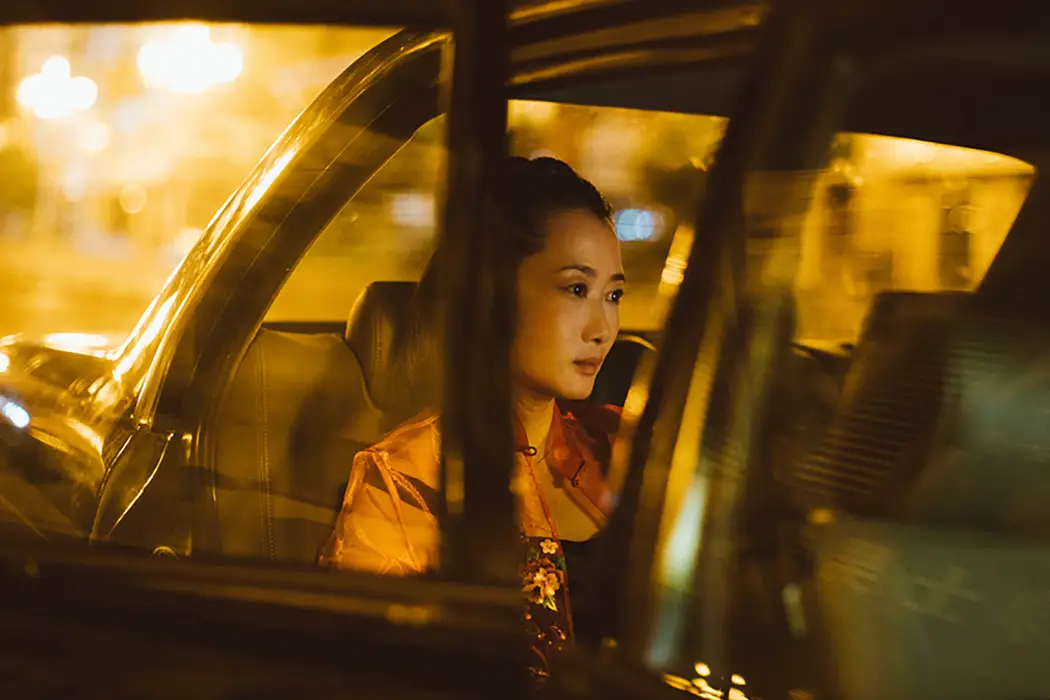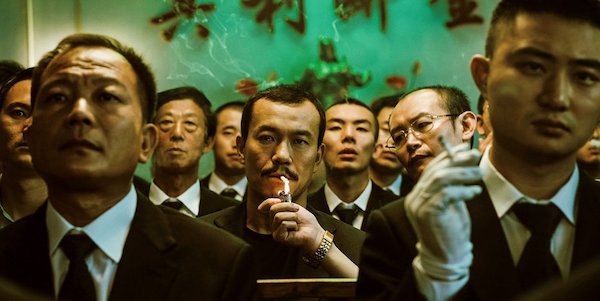ASH IS PUREST WHITE: A Melancholy Tale Of Human Connection

Christina Tucker is a NY-based production assistant and wannabe screenwriter.
Jia Zhangke’s Ash is Purest White begins in 2001, in a crowded club within a rural coal-mining town, where patrons drink, play mahjong, and watch cheap circus acts. Here we are introduced to Qiao (Zhao Tao), a young woman who hovers around mobsters’ tables as they play mahjong, confident edge apparent as she greets the men with firm whacks on the back. She is often the only woman among these intimidating men, members of the jianghu, a term used to refer to Chinese underworld communities. Qiao is also the devoted girlfriend of Bin (Liao Fan) a gruff, quiet gangster among the bunch.
When Bin’s boss is killed, Bin is unexpectedly placed in a position of power, one that makes him a target for violence. Qiao makes a sacrifice for Bin that lands her in jail for five years, and when she is released, the world is unrecognizable to her. Qiao must reconcile her romanticized view of her and Bin’s history with the present reality; Bin has moved on. Qiao paid a price for a future she envisioned in her mind that does not exist, and must either move forward as a woman or reach into her past to seek the comfort it once held for her. While its pace can be painfully slow at times, Ash is Purest White is a nonetheless effective epic about the passage of time, unwaveringly focused on Qiao and her resilient, complicated bond with Bin.
“Time is money, take it.”
When we first see Bin teach Qiao how to shoot a gun, we know she will shoot it again, and feel that inevitability each time the gun appears before Qiao makes the fateful decision that sends her to jail. The underlying suspense that permeates the film lies moreso in the anticipation of where that decision, and those that follow, will lead her in her path as a woman, this suspense due largely to Qiao’s strength as a character.
Qiao is layered and interesting – she is terrifying in her resilience and willingness to scrape her way back into society, but just as sympathetic and even pitiful in her codependence and eagerness to return to toxic environments and relationships.

The film takes its time telling Qiao’s story – relishing in long takes and long conversations. The pacing is slow at the start as it establishes Qiao and Bin’s world, and again sags upon Qiao’s release from jail, when her growth as a woman becomes more obviously the focus. It is neither a violent look at the Chinese underworld nor a melodramatic romance that provides a cathartic, explosive emotional resolution, but rather a melancholy examination of a woman struggling to understand her place in the world.
“I’m a different person.”
Ash is Purest White effectively and consistently explores themes of contrast and tension throughout with both its aesthetic choices and in its characterization. Visual contrasts enhance the life of tension between the various worlds in which Qiao lives. The flashing neon red, green and yellow fluorescent lighting of night clubs feel unnatural and alien in contrast to the waking world, the green hills and gray concrete of Qiao’s hometown. The gray, white, and blue of Qiao’s prison stay is cold and sterile in contrast to the the pastel green and yellow of the outside world when she is released.
The film also finds humor in juxtaposition throughout (for example, when Bin accidentally drops his gun while dancing to “YMCA” at a club) and this humor creates a surreal tone, undeniably funny but also effective in drawing attention to the underlying contradictions present in this world, generally those that result from the liminal spaces, between pop culture and underworld, between traditional and modern, between youth and adulthood.

Ash is Purest White depicts an uneasy transition from past to future for both China as a whole and for Qiao and Bin. As Zhangke shows us the passage of time and its affects on Qiao and Bin, stadiums are built, bullet trains and their shining stations appear as if by magic, fashion changes, phones change, cars change, but the past lingers in the form of resentment, romanticization, and sometimes, frustratingly, both.
Ash Is Purest White: Conclusion
Ash is Purest White is a simmering, heartbreaking story of a connection that perseveres, for better or for worse. It is a story that spans years and miles but is thematically united, led by a remarkable character in Qiao. Her tragedy is that of slow self-destruction, affecting largely because of the feeling of cyclical, almost cosmic inevitability that accompanies many of her choices.
Knowing a film features another country’s culture and/or history, are you likely to research any unknown historical elements beforehand, or go into a film with the knowledge you already have?
Ash is Purest White was released in China on September 21, 2018 and in the United States on March 19, 2019.
Does content like this matter to you?
Become a Member and support film journalism. Unlock access to all of Film Inquiry`s great articles. Join a community of like-minded readers who are passionate about cinema - get access to our private members Network, give back to independent filmmakers, and more.













